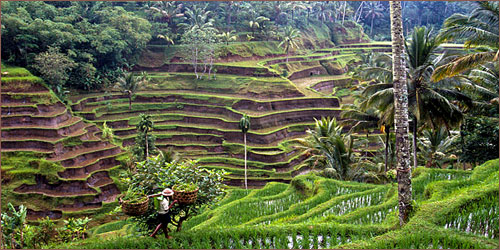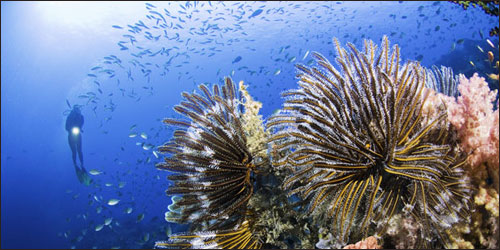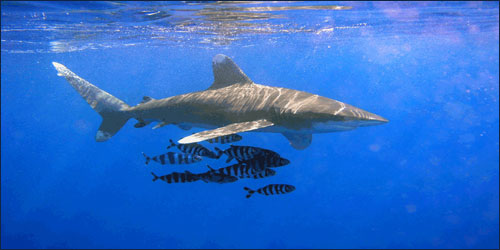WILD WEST END OF INDONESIA
“Go west,” as the saying goes, is good
advice if you want to discover a part of Bali that is really untouched. On the
long western tip of the island is an extensive but little-known nature reserve
called Bali Barat National Park.
It’s not only untouched by tourism: not even the Balinese have made an
impact here. This is Bali as it was before mankind did anything at all to the
landscape, millennia before the neatly sculpted rice terraces and lush palm
groves that most visitors think of as the “natural”
Bali were created.

The park consists of a 20,000-hectare wildlife reserve, a 6000-hectare marine
reserve and a core zone of 50,000 hectares of protected primary forest (although
only small areas of the park are completely pristine). It offers a variety of
habitats that include mangrove swamps, coral reefs, savannah, monsoon forest
and tropical rainforest.
As a park it’s still undeveloped, and facilities for visitors are few,
but local guides can take you on a number of interesting hiking and wildlife
trails. Wildlife, in fact, is one of the main attractions. It’s a great
place for bird-watching, and home to the celebrated Bali starling (Leucospar
rothschildi), the island’s only endemic bird. You can also expect to see
barking deer, mouse deer and black monkeys. Occasionally there are rumours of
sightings, deep in the hills, of the Balinese tiger, the world’s smallest
subspecies of the famous cat, though most wildlife experts believe the last
ones were killed in the 1930s.
Most visitors settle for a standard three-hour hike that takes you on a looping
trail from the visitors’ centre at Labuhan Lalang,
through mangrove swamp and monsoon forest, and back to the centre again. Butlonger
hikes, such as the climb up 698m Mount Kelatakan,
give you a much fuller experience of the scope of the park. One of the best
is a seven-hour hike that starts from Belimbingsari
and goes north over the mountains all the way to Labuhan Lalang. It’s
especially interesting because of the transition in environments along the way.
You can arrange it at the park headquarters in Cekik.
Whether you look at the totally modern or the purely traditional, Bali above
the water is so vibrant and colourful that ifs easy to forget it lies in rich
tropical seas surrounded by reefs — and
what’s just below the waves is as

spectacular as anything on land. In fact, the only surprising
thing about the island’s diving is that more people haven’t already
caught on to how good it is. There’s everything here, from shakos, beginner’s
dives to walls, wrecks and high adrenalin drift dives with big fish. However
there’s no doubt that many divers are getting the message and some sites
can occasionally feel crowded. Solutions include diving at locations that are
still relatively unknown; if you’re experienced, diving where there are
challenging conditions — for example at Nusa
Penida, Tepekong or Gili Mimpang (see below): or
simply looking at a familiar site from a new angle. For example, at Tulamben,
the most popular dive site in Bali, instead of diving the Liberty wreck, the
area’s most famous attraction, you can dive on a wall and slope nearby
dud host a fantastic array of unusual or spectacular macro Me.
If you’re looking for something more advert-wous. Then one of your best
options is undoubtedly Nusa Penida. This island just off Bali’s east coast
offers exhilarating drift dives in some of the strongest currents you’re
ever likely to experience as a recreational diver. Three knots or more is common.
The payback for such demanding conditions is the chance to see sharks, mantas,
mola-molas and other large pelagics.
Two other Bali dive spots that offer radical challenges are Gili Mimpang and
Tepekong, both off Candi Dasa. At Gili Mimpang divers usually encounter 20-30
sharks on each dive. It’s another world-class site. Tepekong is notorious
for an underwater canyon — sometimes nicknamed the “toilet”
due to the strong currents that flush through it—that attracts abundant
big fish, including schooling jacks, barracuda, mantas, whale sharks and mola-molas.
In addition to daunting currents, both sites usually have very cold water.
If you’re not in the mood to get swept away, there are lots of other good
options, and even the sites that are well and truly “discovered”
are still excellent by most standards. A classic example is Menjangan Island.
With its craggy reef walls, clear waters and abundant marine life, it has long
been regarded as one of the top dive sites in Bali. All the local dive operators
run regular trips here. But ironically, the best dive is one that few people
attempt, primarily because of its depth. It’s the “Anker”
wreck, the remains of a trading vessel from the last
century that lies in 44m of water off the western tip of the island.
The main attraction is the abundance of marine life
— including white-tip sharks — around the various fragments of wreckage.

On the other hand, virtually everyone who comes here dives the wall on the south
side of the island. It’s a great feeling to be gliding along with nothing
but deep blue water below, and the gorgonian fans that sprout at right angles
from the wall are truly enormous, but the fish are less abundant here. It’s
easy to find yourself wondering what the place must have been like 15 years
ago.


